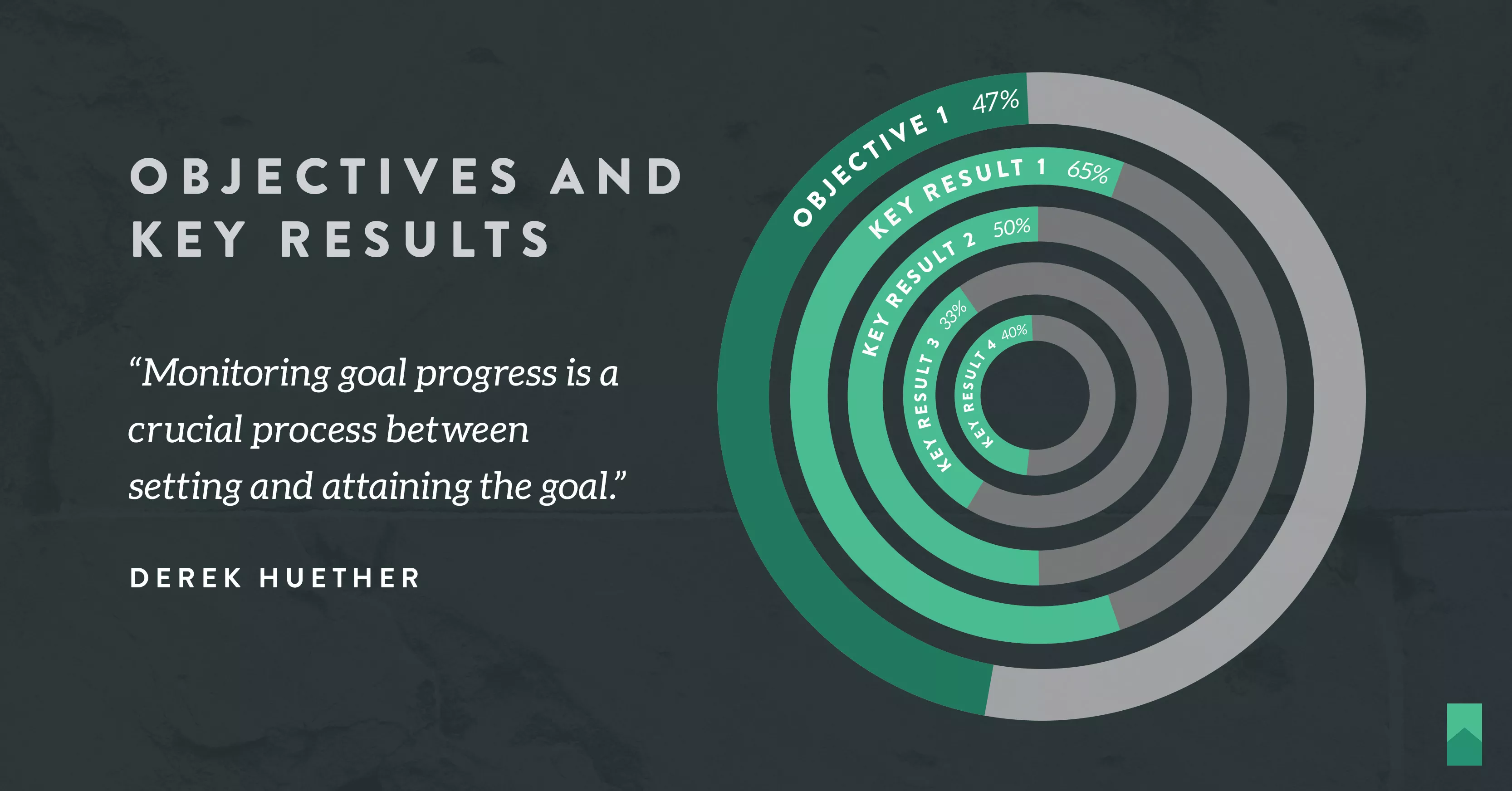OKR – An Introduction: Objectives and Key Results
Objectives and Key Results (OKR) is a popular leadership process for setting, communicating and monitoring goals and results in organizations on a regular schedule, usually quarterly. The intent of OKRs is to link organization, team and personal objectives in a hierarchical way to measurable results or outcomes, focusing all efforts to make measurable contributions.
Why OKRs are important
In a Harvard Business Review survey, only 55% of middle managers can name one of their company’s top five priorities. When the leaders charged with explaining strategy to their people are given five chances to list their company’s strategic objectives, nearly half fail to get one right. This isn’t anything new. Andrew Grove first wrote about Objectives and Key Results (OKR) in his book High Output Management (1983) stating “A successful MBO system needs only to answer two questions: Where do I want to go? How will I pace myself to see if I’m getting there?”
Grove was actually referring to OKR, when he referenced MBO (Management By Objectives) in his book. That said, knowing where you want to go will provide the Objective. How you will pace yourself to see if you are getting there gives you milestones, or Key Results.
Later, Franklin Covey arrived at a similar strategy with The 4 Disciplines of Execution. (Have wildly important goals and a single measure of success)
Qualities of Objectives
- Ambitious
- Qualitative
- Actionable
- Time Bound
Qualities of Key Results
- Measurable and Quantitative
- Makes the objective achievable
- Time Bound
OKR example for a start-up company raising a funding round
Company Objective 1
Finish raising capital for growth needs within 6 months [47% complete]
Key Results 1-4
- Email and phone 100 venture capital and seed funds (65 VCs contacted) [65%]
- Get at least 30 follow-up contact meetings or conference calls (15 follow-up meetings completed) [50%]
- Solicit at least 3 term sheets of our minimum required terms (1 term sheet solicited) [33%]
- Close an investment round with a minimum $10 Million pre-money (4 million raised) [40%]
Individual Objectives for Key Result 1
The objective is to email and phone 100 venture capital and seed funds. This will be distributed across one or more individuals. Then they will own individual key results.
Individual Key Results
Note that completion of these lower key results roll up to the higher level key result.
- Bob Smith research and identify 100 VC and seed funds (100 VC and seed funds identified) [100%]
- John Doe email or phone 4 VC or seed funds every week (3 VC’s contacted this week) [75%]
- Bob Smith research and identity 50 Angel Investors (25 Angel Investors identified) [50%]
How to implement an OKR
- List 3 objectives you want to strive for on each level. (company, program, individual)
- For each objective, list 3-4 key results to be achieved. (lower-level objectives become higher-level key results)
- Communicated objectives and key results to everyone within the company.
- Identify metrics (via GQM) that will communicate progress of completion.
- Update each result at a predefined cadence on a 0-100% completion scale.
- Consider an objective done when its results reach 70-80%.
- Review OKR’s regularly and set new ones.
Does monitoring OKR and goal progress promote goal attainment?
A journal article* from 2016 supports the suggestion that monitoring goal progress is a crucial process between setting and attaining the goal. Also, progress monitoring had larger effects on goal attainment when the outcomes were reported or made publicly available, and when the information was physically recorded.
*Psychological Bulletin, Vol 142(2), Feb 2016, 198-229



Comment (1)
Mark Hull
OKR is great in that it’s based on a future Objective. I noticed that the KR element that supports O element sounds a whole lot like my MBA GO Plan, where GO = Goals and Objective. In my MBA Branding Degree, I was taught to look at a wide range of Goals ( some easy all the way to complex ) as an Objective’s ” building blocks or stones ” . Some objectives have a few goals to look at and complete while other move lofty Objectives have a many goals to complete.
All the best.